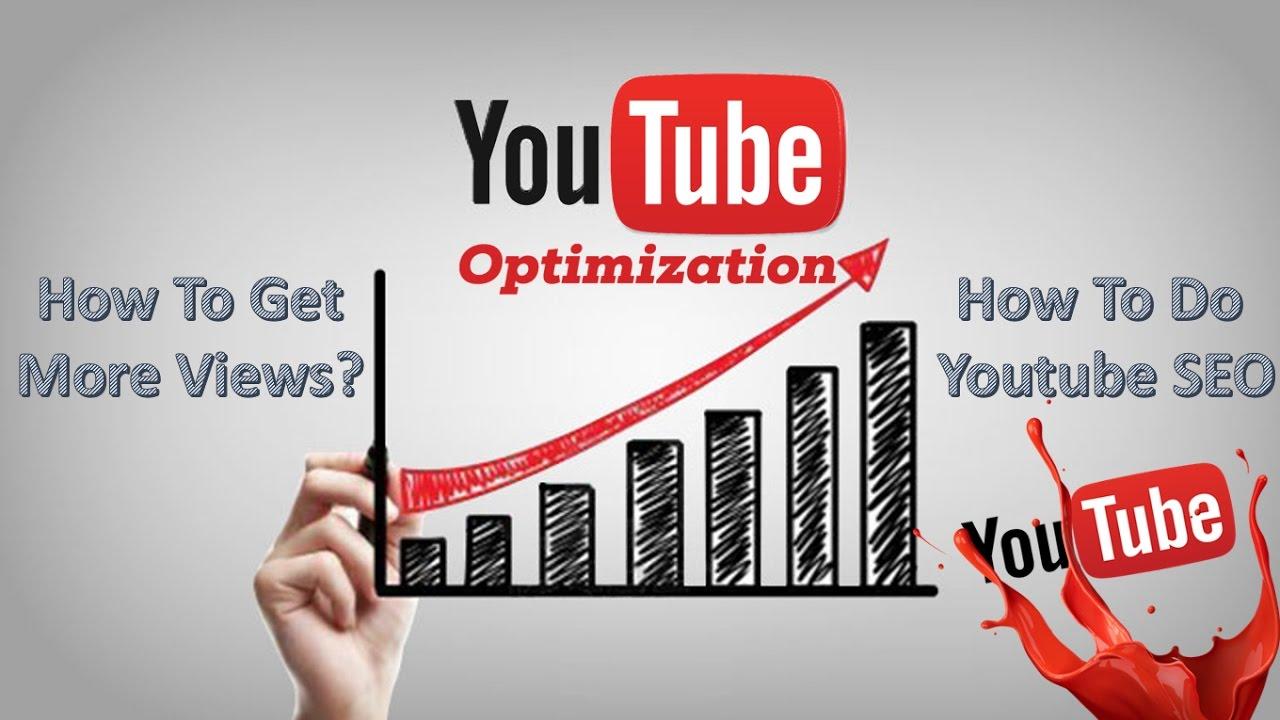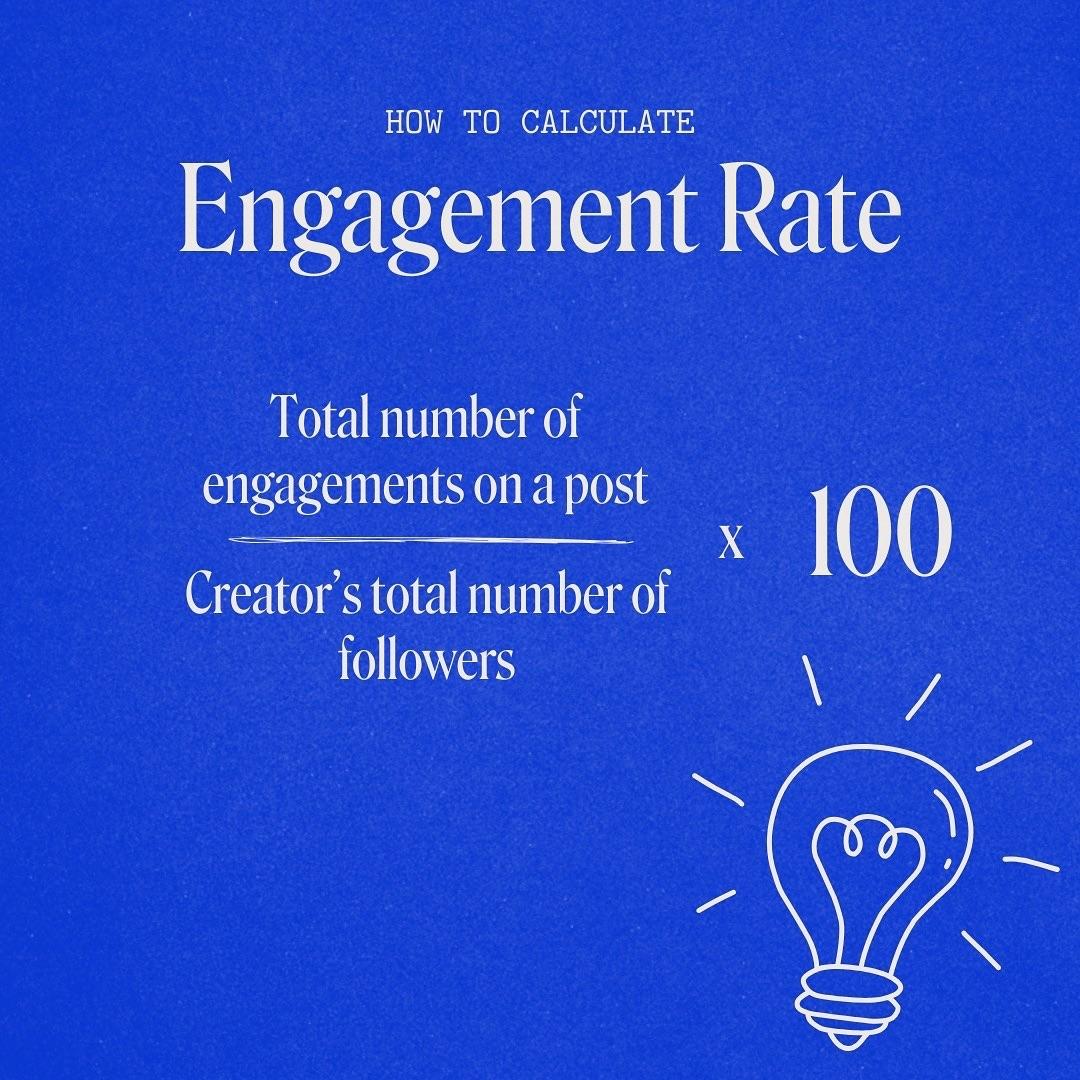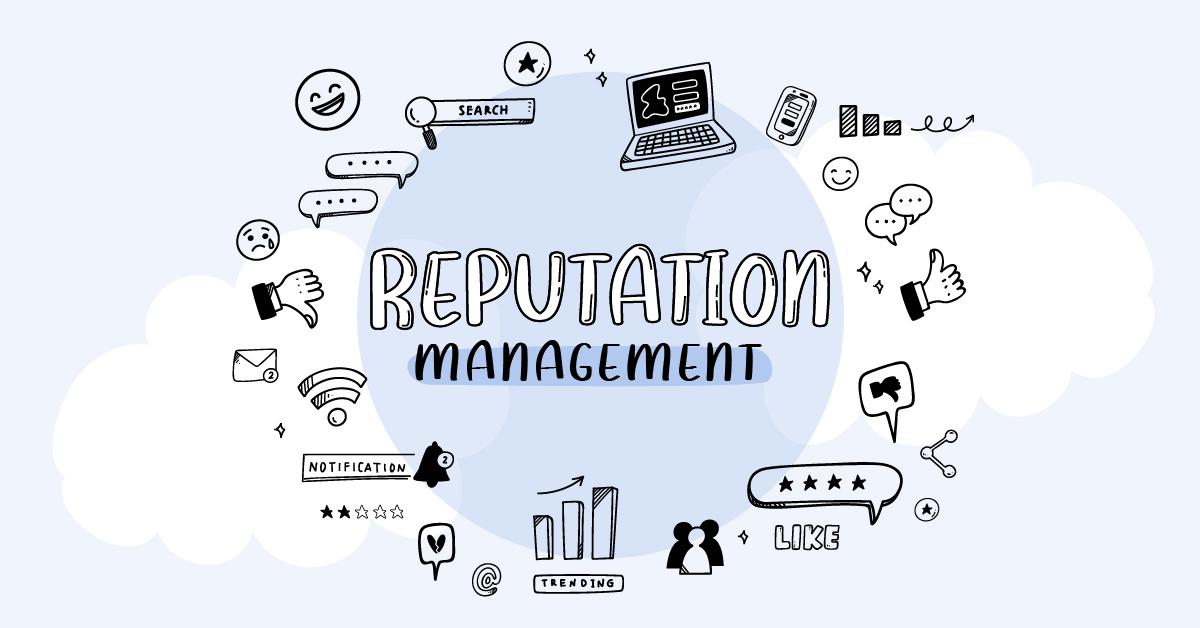
In today’s digital age, your online reputation can make or break your business. With just a few clicks, potential customers can uncover a wealth of information about your brand—both good and bad. That’s why reputation management is no longer just a nice-to-have; it’s a crucial component of any savvy marketer’s toolkit. But where do you start? Enter reputation management software, your secret weapon in the battle for a positive online presence. In this article, we’ll explore the best reputation management tools available today—each designed to help you monitor, protect, and enhance your brand’s image. Whether you’re a small business owner or part of a larger enterprise, the right software can give you the edge you need to stand out in a crowded marketplace. So, let’s dive in and discover how these powerful tools can transform the way you manage your reputation!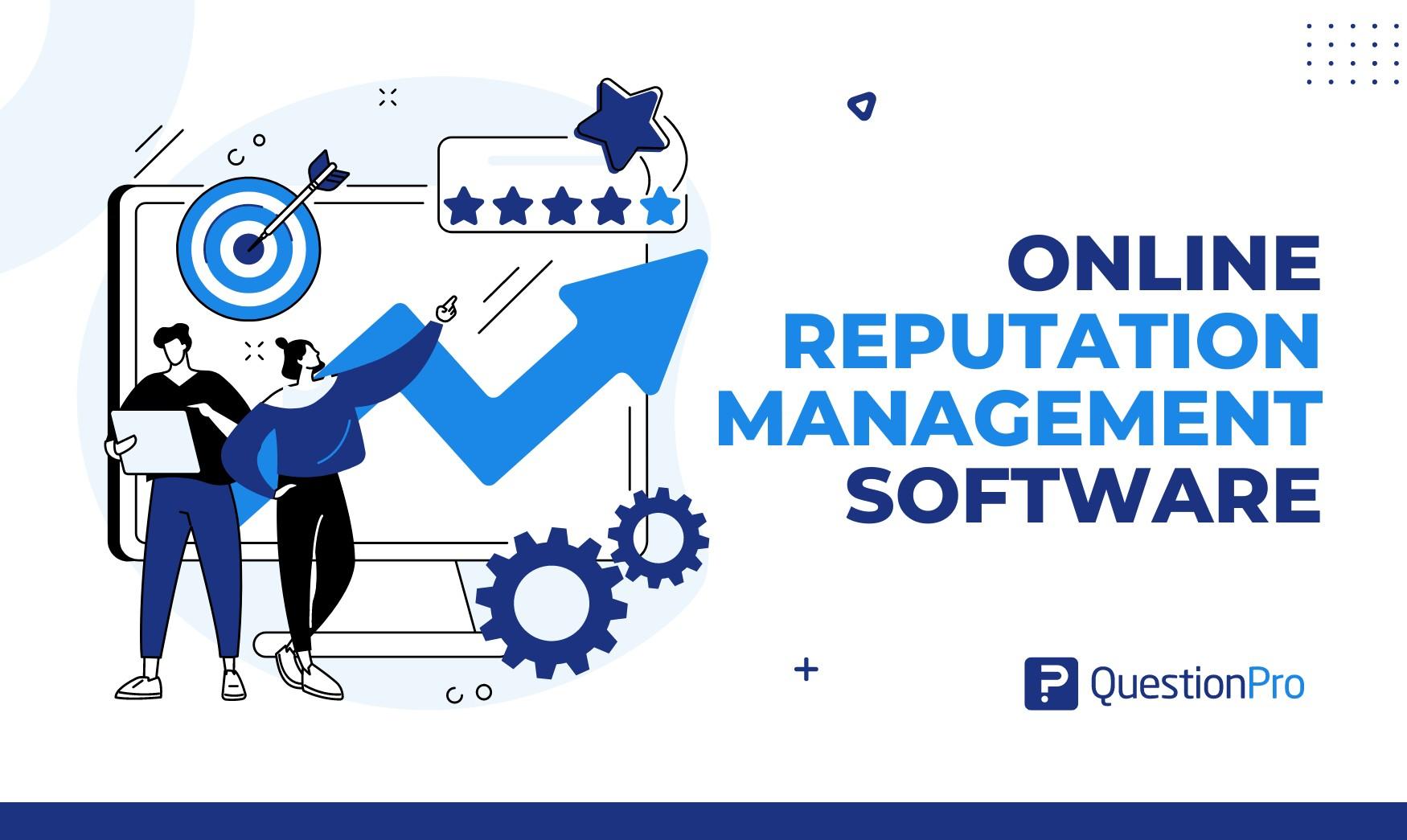
Understanding Reputation Management Software and Its Importance
In today’s digital landscape, the reputation of a business can make or break its success. As consumers increasingly turn to online reviews and social media to guide their purchasing decisions, the importance of managing one’s online reputation cannot be overstated. Reputation management software is designed to help businesses monitor, manage, and improve their online presence, making it a crucial investment for any company looking to thrive in a competitive market.
One of the primary functions of reputation management software is to track online mentions. This allows businesses to stay informed about what is being said about them across various platforms, including social media, review sites, and blogs. By regularly monitoring these mentions, companies can quickly address any negative comments or misinformation, ensuring that their reputation remains intact.
Moreover, effective reputation management software offers analytics tools that provide valuable insights into customer sentiment and brand perception. By analyzing this data, businesses can identify trends, understand their audience better, and adapt their strategies accordingly. This proactive approach not only helps in addressing current issues but also in preventing potential reputational crises in the future.
Another key feature of these tools is the capability to respond to reviews and feedback directly. By engaging with customers—both positive and negative—companies can demonstrate their commitment to customer satisfaction. This engagement not only helps to resolve issues but also fosters a sense of community. Customers who feel heard are more likely to become loyal advocates for the brand.
Additionally, reputation management software often comes equipped with features for soliciting feedback from customers. By actively inviting reviews and testimonials, businesses can build a more robust online presence with authentic positive feedback. This can significantly enhance their credibility in the eyes of potential customers, setting them apart from competitors who may not prioritize reputation management.
| Feature | Benefits |
|---|---|
| Monitoring Tools | Stay updated on brand mentions across platforms. |
| Analytics | Gain insights into customer sentiment and trends. |
| Review Management | Respond to feedback proactively and engage customers. |
| Feedback Solicitation | Encourage positive reviews to enhance credibility. |
Furthermore, reputation management software can help in crisis management. Should a negative event occur, having the right tools in place allows businesses to act quickly and effectively. This can include issuing public statements, responding to reviews, or even reaching out to dissatisfied customers directly. The quicker a company can respond to a crisis, the better chance it has of mitigating damage to its reputation.
Lastly, investing in reputation management software can yield significant long-term benefits. A solid reputation not only attracts new customers but can also improve employee morale and retention. Employees are more likely to take pride in their work and remain loyal to a company that has a positive public image.
Key Features to Look for in Reputation Management Tools
Choosing the right reputation management tool can significantly impact your brand’s presence and perception online. Here are some essential features to consider when evaluating these tools:
- Monitoring Capabilities: A robust reputation management tool should offer real-time monitoring of your brand across various platforms, including social media, review sites, and forums. This allows you to stay ahead of any negative mentions and address them promptly.
- Sentiment Analysis: Look for tools that include sentiment analysis to gauge public perception. Understanding whether mentions are positive, negative, or neutral can help you tailor your response strategy effectively.
- Reporting and Analytics: Comprehensive reporting features are vital. They should provide insights into how your reputation fluctuates over time and highlight the impact of your management efforts. This data is essential for making informed decisions.
- Review Generation: The ability to generate and solicit reviews is crucial. Tools that facilitate the gathering of customer reviews can enhance your online reputation by promoting positive feedback and minimizing the impact of negative reviews.
- Integration with Other Tools: Ensure the reputation management software can integrate smoothly with your existing systems, such as CRM, social media platforms, and email marketing tools. This integration can streamline processes and improve overall efficiency.
Furthermore, consider the user experience of the tool:
- User-Friendly Interface: A clean and intuitive interface can save you time and make it easier for your team to navigate the tool effectively. The best tools should require minimal training to get started.
- Customizable Alerts: Custom alerts can notify you of significant changes in your brand reputation, allowing you to react swiftly to potential crises or opportunities.
Lastly, evaluate the support and resources provided:
- Customer Support: Reliable customer support is essential. Look for vendors that offer 24/7 support, comprehensive tutorials, and responsive communication to assist you in times of need.
- Educational Resources: Many reputable tools provide resources such as blogs, webinars, and case studies to help you better understand reputation management strategies and best practices.
the right reputation management software should empower your brand to proactively manage its online presence, leveraging features that foster engagement and build trust with your audience. By focusing on these key features, you can select a tool that aligns with your business objectives and enhances your brand reputation effectively.
Top Reputation Management Software Solutions to Consider
In today’s digital landscape, maintaining a positive online reputation is crucial for businesses of all sizes. With the plethora of reputation management software solutions available, choosing the right one can be overwhelming. Here are some standout options that can help you safeguard your brand’s image and manage customer feedback effectively.
1. Brand24
Brand24 empowers businesses to monitor their online presence seamlessly. With its real-time monitoring capabilities, you can keep tabs on social media mentions, blog posts, and reviews. What sets Brand24 apart is its robust analytics, enabling you to gauge public sentiment and respond proactively.
2. Reputation.com
Reputation.com offers a comprehensive suite of tools designed specifically for reputation management. This platform not only manages reviews but also streamlines customer feedback through surveys and analytics. Its feature for local SEO optimization helps businesses enhance their visibility, driving more traffic to their sites.
3. Trustpilot
Trustpilot is a globally recognized platform that helps businesses collect and showcase customer reviews. By leveraging customer feedback, you can build trust with potential clients. Additionally, Trustpilot’s robust SEO capabilities can help your reviews rank higher in search results, further enhancing your online presence.
4. Yotpo
For e-commerce businesses, Yotpo is a game-changer. This software not only helps collect reviews but also allows brands to integrate user-generated content into their marketing efforts. With features like visual marketing and social proof, you can enhance your brand’s credibility and drive conversions.
5. Podium
Podium stands out with its focus on messaging and customer engagement. This software enables businesses to communicate directly with customers via text, facilitating quick responses to reviews and inquiries. With its review generation feature, you can effortlessly ask for feedback after every interaction.
| Software | Key Feature | Best For |
|---|---|---|
| Brand24 | Real-time monitoring | All businesses |
| Reputation.com | Comprehensive analytics | Medium to large businesses |
| Trustpilot | Customer reviews | Any business seeking credibility |
| Yotpo | User-generated content | E-commerce |
| Podium | Direct customer messaging | Service-oriented businesses |
Choosing the right reputation management software is not just about monitoring reviews; it’s about leveraging insights to foster better customer relationships. Each of these platforms offers unique features that cater to different business needs, making it essential to assess your specific requirements. By investing in the right tools, you can elevate your brand’s online presence and turn negative feedback into opportunities for growth.
How to Assess Your Business Needs for Reputation Management
Understanding your business needs for reputation management begins with a thorough evaluation of your current standing in the market. Start by conducting a reputation audit. Look into various platforms where your business is mentioned, such as social media, review sites, and forums. This will help you gauge public perception and identify areas that require immediate attention.
Next, consider your specific goals. Are you looking to improve customer satisfaction, manage negative reviews, or increase positive brand mentions? Defining clear objectives will guide your choice of tools and strategies. Here are some key questions to ask yourself:
- What are the primary channels influencing my reputation?
- What types of feedback or content are most common?
- How quickly do I need to respond to issues?
- What resources am I willing to allocate for reputation management?
Once you’ve established your goals, it’s time to analyze your audience. Understanding who your customers are and how they communicate can significantly enhance your reputation management strategy. Use analytics tools to gather demographic information and insights about your audience’s behavior. This will help tailor your communication and engagement efforts more effectively.
Another critical component is determining the level of automation you need. Some businesses thrive on personal interactions, while others benefit from automated tools that can monitor and respond to feedback in real-time. Consider the following automation aspects:
- Monitoring: How will you track mentions and reviews?
- Response: Do you want automated responses for certain feedback types?
- Reporting: What kind of analytics do you need?
assess your competitors. What reputation management strategies are they employing? Analyze their strengths and weaknesses to uncover opportunities for your own business. A simple comparison table can help clarify your findings:
| Competitor | Strengths | Weaknesses |
|---|---|---|
| Competitor A | Strong social media presence | Slow response time |
| Competitor B | Excellent customer service | Limited online visibility |
| Competitor C | High customer engagement | Negative reviews on major platforms |
By taking these steps, you can create a solid foundation for your reputation management strategy. Remember, the key is to be proactive rather than reactive. Frequent assessments will ensure you stay ahead of potential issues and maintain a positive public perception.
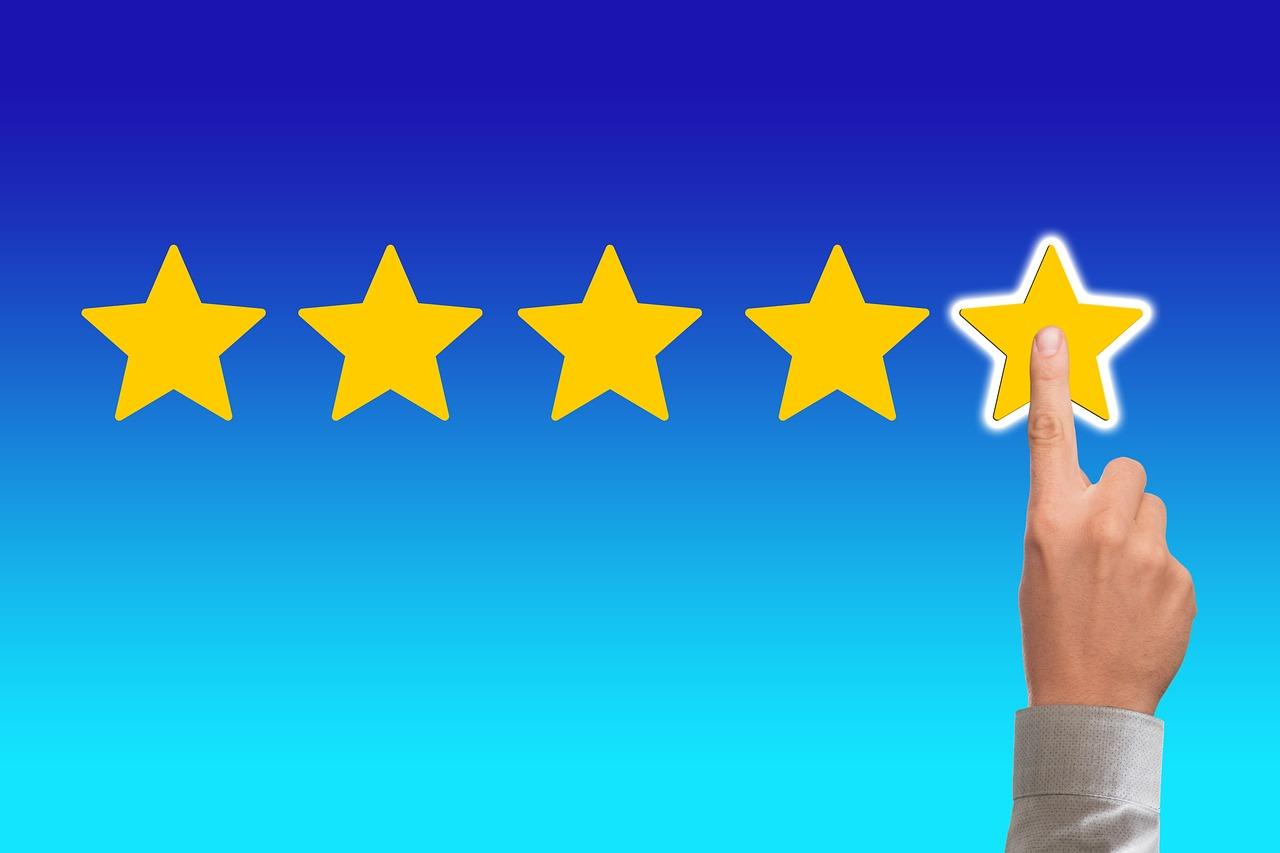
The Role of Reviews in Shaping Your Brands Image
In today’s digital landscape, reviews have become a pivotal component of brand perception. Customers are more informed than ever, with online reviews influencing their purchase decisions significantly. The way your brand is perceived can be heavily swayed by what people are saying about it online. A single negative review can tarnish your hard-earned reputation, while a multitude of positive reviews can elevate your brand to new heights.
One of the most powerful aspects of consumer reviews is their authenticity. Shoppers today crave transparency, and they trust the experiences of their peers over traditional advertising. A recent study showed that over 70% of consumers trust reviews as much as personal recommendations. This means that your customers’ voices can either amplify your brand’s image or undermine it.
To effectively manage your brand’s reputation, it’s crucial to actively engage with your customers’ feedback. This means not only responding to reviews—both positive and negative—but also using these insights to inform your business strategies. By acknowledging and addressing concerns, you demonstrate that you value your customers’ opinions, which can foster loyalty and trust.
Implementing reputation management software can streamline this process. Here are some key features that can help you navigate the world of online reviews:
- Review Monitoring: Track what’s being said about your brand across various platforms in real-time.
- Response Management: Quickly respond to reviews from a centralized dashboard.
- Analytics: Gain insights into customer sentiment and trends over time.
- Reporting: Generate reports to analyze performance and identify areas for improvement.
Another important aspect of reviews is their impact on SEO. Search engines consider reviews as a ranking factor, so having a robust review presence can improve your visibility online. More reviews, particularly positive ones, can help establish your brand as an authority in your niche, driving organic traffic to your website.
| Review Type | Impact on Brand Image | SEO Benefits |
|---|---|---|
| Positive Reviews | Enhance credibility and trust | Boosts rankings on search engines |
| Negative Reviews | Can harm reputation if unaddressed | May require SEO strategies to combat |
| Mixed Reviews | Shows authenticity but needs management | Can improve keyword relevance |
Ultimately, the way you handle reviews—both good and bad—will directly contribute to your brand’s image. By leveraging reputation management tools, you can transform feedback into a powerful asset, helping to create a positive narrative around your brand. Remember, each review is a chance to connect with your audience and reflect the values your brand stands for.

Leveraging Social Media for Effective Reputation Management
In today’s digital landscape, social media is not just a platform for sharing personal moments; it’s a vital tool for managing your brand’s reputation. With millions of users actively engaging on platforms like Facebook, Twitter, and Instagram, your online presence is constantly in the spotlight. It’s essential to harness these channels effectively to maintain a positive image and counteract any negative perceptions.
One of the most effective ways to leverage social media is through proactive engagement. By actively participating in conversations about your brand, you can not only showcase your values but also address concerns before they escalate. Here are a few strategies to keep in mind:
- Monitor Mentions: Use tools to keep track of what people are saying about your brand. This allows you to respond quickly and appropriately.
- Share User-Generated Content: Highlight positive feedback from customers. This not only builds community but also reinforces trust in your brand.
- Engage with Followers: Respond to comments and messages promptly. Show your audience that you value their input and are attentive to their needs.
Additionally, content is king when it comes to reputation management. Creating valuable, informative, and engaging content tailored to your audience can significantly enhance your brand’s image. Consider the following types of content:
- Behind-the-Scenes Insights: Share glimpses of your company culture or production processes. This transparency builds trust.
- Success Stories: Highlight case studies or testimonials that showcase your brand’s impact.
- Educational Posts: Provide tips or advice relevant to your industry. This positions you as a thought leader.
Another key aspect to consider is the use of influencer partnerships. Collaborating with influencers who align with your brand values can amplify your message and enhance your credibility. When choosing influencers, keep these factors in mind:
- Relevance to your industry
- Engagement rates of their audience
- Authenticity and trustworthiness
To effectively measure your reputation management efforts, you need to analyze social media metrics. Use tools that allow you to track:
| Metric | Purpose |
|---|---|
| Engagement Rate | Measures how actively users interact with your content. |
| Sentiment Analysis | Assesses the tone of mentions (positive, negative, neutral). |
| Reach and Impressions | Tracks how many people see your content and how often. |
Ultimately, your presence on social media can either make or break your reputation. By proactively engaging with your audience, creating valuable content, leveraging influencer partnerships, and analyzing your performance, you can cultivate a brand image that resonates positively with your target audience. Embrace the power of social media in your reputation management strategy and watch your brand thrive.
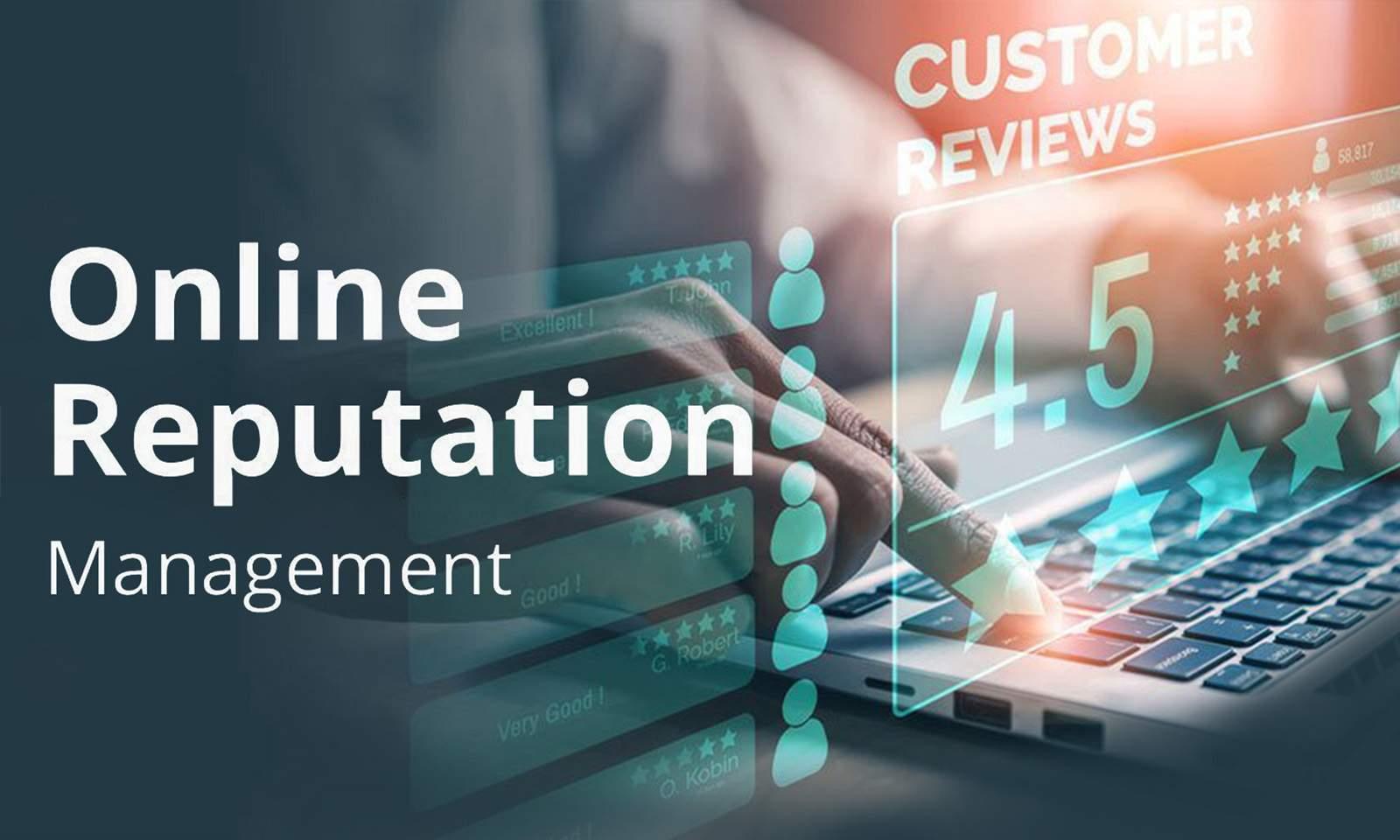
Integrating Reputation Management Software with Your Existing Tools
In today’s competitive landscape, can be a game changer for your business. Such integration not only streamlines your workflow but also enhances the overall effectiveness of your reputation management strategy. Here’s how you can make the most of this synergy:
Seamless Data Flow: By connecting your reputation management software with customer relationship management (CRM) systems, you can ensure that all customer interactions are logged and monitored. This seamless data flow allows for:
- Real-time feedback collection
- Customized responses based on customer history
- Automated follow-ups to improve engagement
Enhanced Analytics: Integrating your reputation management tools with analytics platforms enables you to gain deeper insights into customer sentiment. By analyzing reviews, social media mentions, and feedback, you can uncover key trends. Consider using:
| Metric | Benefit |
|---|---|
| Sentiment Score | Understand overall customer feelings |
| Review Volume | Gauge customer engagement levels |
| Response Time | Improve customer service efficiency |
Automated Reputation Alerts: Leverage integration to set up alerts for any significant changes in your brand’s reputation. Whether it’s a sudden influx of negative reviews or an overwhelming positive trend, timely notifications can help you respond swiftly. A few tools that can help include:
- Google Alerts
- Social Media Monitoring Tools
- Email Notification Systems
Centralized Communication: Integrating your reputation management software with communication platforms like Slack or Microsoft Teams can simplify team collaboration. By centralizing discussions, your team can:
- Share feedback easily
- Discuss strategies in real time
- Assign tasks based on reputation insights
By taking these steps to integrate your reputation management software with existing tools, you not only enhance your operational efficiency but also create a proactive approach to managing your brand’s image. This holistic strategy can lead to improved customer satisfaction, increased loyalty, and ultimately, a stronger market presence.

Cost Considerations: Finding the Best Value for Your Investment
When delving into reputation management software, it’s crucial to weigh the costs against the potential benefits. Investing in the right tool can safeguard your brand’s reputation, enhance customer trust, and ultimately drive sales. However, not all options are created equal, which is why understanding the financial landscape is essential for making an informed decision.
First, consider the following factors that can impact the overall cost:
- Subscription Models: Many platforms offer monthly or annual subscriptions with varying features. Assess whether a monthly commitment or an annual plan is more suitable for your financial strategy.
- Feature Set: Some tools come with basic features, while others offer advanced analytics, social media monitoring, and customer engagement tools. Identify which features are essential for your brand’s reputation management.
- Scalability: As your business grows, you may need to expand your software capabilities. Choose a solution that allows for easy upgrades without incurring significant additional costs.
- Customer Support: Quality customer support can save you time and headaches. Ensure that your chosen software includes robust support options, which may influence the overall pricing.
Moreover, it’s beneficial to compare different providers. Below is a simplified table showcasing key aspects of some popular reputation management software:
| Software | Monthly Cost | Key Features | Best For |
|---|---|---|---|
| Brand24 | $49 | Social listening, analytics | Small businesses |
| Reputation.com | $299 | Review management, reporting | Medium to large businesses |
| Trustpilot | $199 | Review collection, insights | All business sizes |
Don’t forget to also consider hidden costs that may arise with certain platforms. These can include setup fees, additional charges for advanced features, or costs associated with training your team to use the software effectively. Make sure to read the fine print and ask potential vendors about any extra fees that may apply.
Additionally, evaluate the return on investment (ROI). A robust reputation management tool can help you avoid the high costs associated with a damaged reputation, including lost customers and diminished brand trust. By investing wisely, you can ensure that your chosen software pays for itself in both tangible and intangible benefits.
Lastly, take advantage of free trials or demos whenever possible. This not only helps you assess the user-friendliness of the software but also provides insight into whether it truly meets your specific needs without committing a significant portion of your budget upfront.

Real User Experiences: Testimonials and Case Studies
When it comes to choosing the best reputation management software, there’s no better endorsement than real user experiences. Here are some testimonials from individuals and businesses who have transformed their online presence with the right tools.
Jessica T., Small Business Owner
“I was struggling to keep up with negative reviews that were impacting my business. After using this software, I saw a 150% increase in positive reviews in just three months!”
With features like automated review requests and sentiment analysis, Jessica was able to turn her online reputation around. She emphasizes how easy it was to use and integrate with her existing systems.
Mark L., Marketing Manager
“The analytics dashboard is a game changer! It helped us identify key areas for improvement and allowed us to craft our messaging effectively.”
Mark’s company utilized the software to monitor their brand sentiment and track the effectiveness of their campaigns. He mentions the insights gained were invaluable for strategic decisions.
Case Study: Local Restaurant Chain
After facing a series of negative reviews due to a temporary service issue, a local restaurant chain turned to reputation management software. Their results were remarkable:
| Metric | Before | After (3 months) |
|---|---|---|
| Average Star Rating | 3.2 | 4.5 |
| Positive Reviews | 20% | 75% |
| Customer Retention Rate | 60% | 85% |
This turnaround was facilitated by the software’s proactive monitoring and review response features, which helped the restaurant engage customers and address issues promptly.
Sarah K., Freelance Consultant
“I didn’t realize how much my online reputation affected my client acquisition. This software helped me showcase my strengths, and now I’m getting more referrals than ever!”
Sarah highlights the importance of maintaining a polished online image, and how the software’s capabilities allowed her to curate positive content that resonated with potential clients.
These stories illustrate the transformative power of reputation management software. From local businesses to freelancers, users have found success in enhancing their online presence and building trust with their target audiences. Whether you’re facing challenges with negative feedback or simply want to amplify your positive reputation, there’s a solution waiting for you.
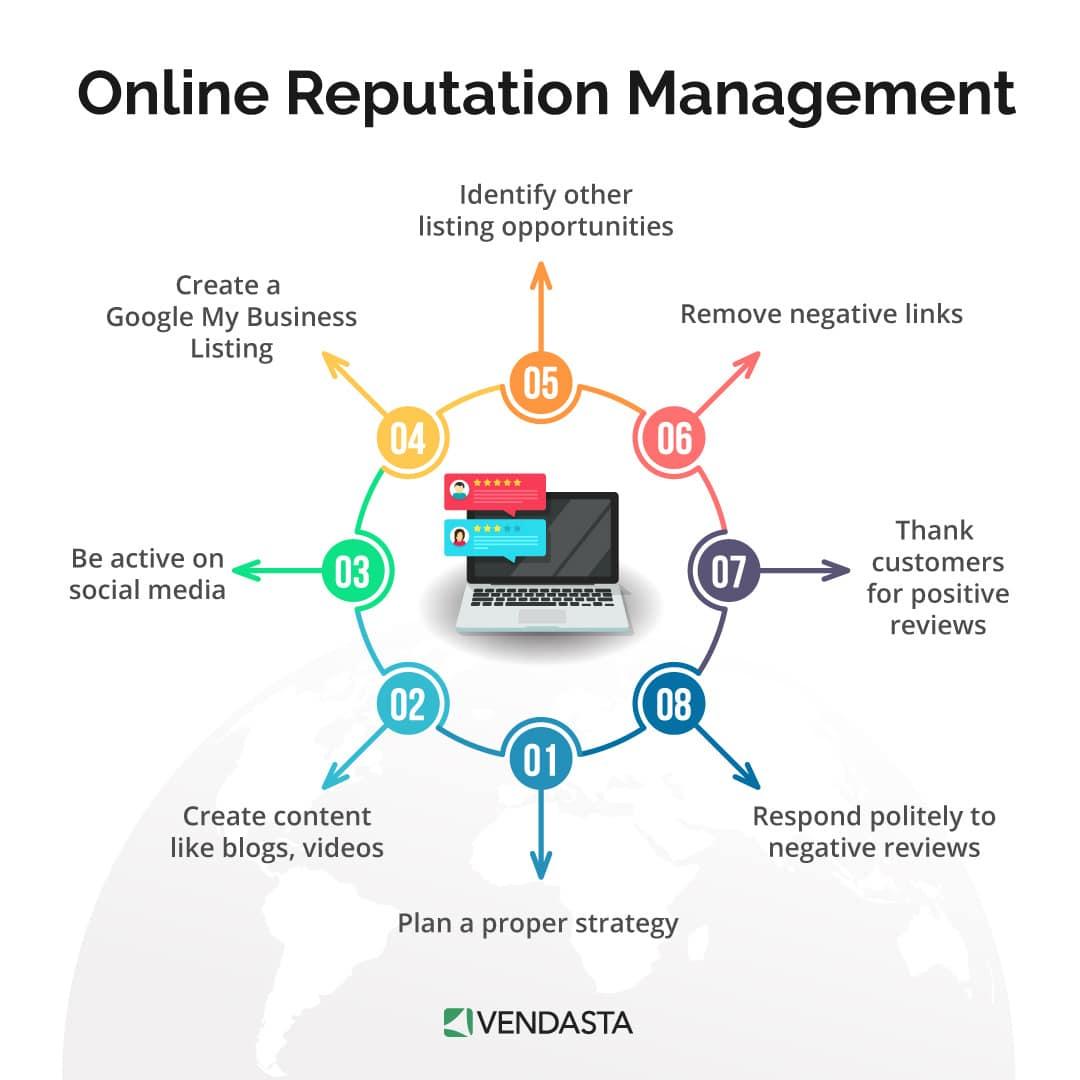
Tips for Implementing Reputation Management Software Successfully
Successfully implementing reputation management software is essential for businesses looking to enhance their online presence and build trust with customers. Here are some practical tips to help you get the most out of your reputation management tools:
- Choose the Right Software: Not all reputation management software is created equal. Assess your specific needs and select a platform that offers features tailored to your business. Look for tools that provide sentiment analysis, review aggregation, and social media monitoring.
- Set Clear Goals: Before diving into implementation, define what you want to achieve. Are you aiming to improve customer satisfaction, increase positive reviews, or monitor competitor activity? Having clear objectives will guide your strategy.
- Train Your Team: Make sure your staff knows how to use the software effectively. Organize training sessions and provide ongoing support to ensure everyone is comfortable navigating the platform. This will maximize engagement and productivity.
- Monitor Your Online Presence: Regularly check your brand’s online reputation using the software. Set up alerts for mentions across social media and review sites. This proactive approach helps you address any negative feedback swiftly.
- Engage with Customers: Use the insights gained from the software to interact with your audience. Respond to reviews, whether positive or negative, and show that you value customer feedback. This can significantly enhance your brand image.
- Analyze and Adjust: Leverage the analytics provided by the software to assess your reputation management efforts. Identify patterns, popular sentiments, and areas needing improvement. Use this data to refine your strategy continuously.
| Feature | Benefit |
|---|---|
| Real-Time Monitoring | Stay ahead of potential crises by tracking mentions instantly. |
| Sentiment Analysis | Understand overall public perception and identify trends. |
| Review Aggregation | Centralize feedback from various platforms for a holistic view. |
| Competitive Analysis | Gain insights into how your brand stacks up against competitors. |
Integrating reputation management software into your business practices can be a game-changer. By following these tips, you can ensure a smoother implementation process, allowing you to focus on building a stellar reputation that attracts and retains customers.

Best Practices for Monitoring and Responding to Online Reviews
In the digital age, keeping an ear to the ground regarding online reviews is essential for maintaining a positive brand reputation. The first step is to set up alerts that notify you when new reviews are posted about your business. This allows you to respond promptly, showing customers that you value their feedback.
Next, consider utilizing reputation management software. These tools can streamline the process of monitoring reviews across various platforms. Here are some features to look for:
- Real-time notifications: Get instant alerts when reviews are posted.
- Sentiment analysis: Understand the overall sentiment of reviews quickly.
- Response templates: Save time with customizable response templates for positive and negative reviews.
- Analytics dashboard: Gain insights into trends and overall performance.
When responding to reviews, it’s crucial to maintain a professional tone, regardless of the sentiment. Here are some tips:
- Be timely: Aim to respond within 24-48 hours to show you’re engaged.
- Address the reviewer by name: Personalizing your response fosters a connection.
- Thank the reviewer: Always show appreciation, even for critical feedback.
- Take the conversation offline: If issues arise, invite the reviewer to discuss them privately.
Furthermore, it’s important to create a strategy for handling negative reviews. Instead of ignoring them, consider implementing a structured approach:
| Step | Action |
|---|---|
| 1 | Review the feedback carefully. |
| 2 | Craft a thoughtful response. |
| 3 | Offer a solution if applicable. |
| 4 | Follow up with the customer. |
Lastly, don’t forget to encourage satisfied customers to leave positive reviews. A strong volume of positive feedback can help overshadow the occasional negative comment. Here’s how to effectively solicit reviews:
- Ask in person: If you have a brick-and-mortar location, ask happy customers to share their experiences.
- Follow up via email: Send a thank-you email post-purchase, including links to review platforms.
- Incentivize participation: Offer discounts or entry into a giveaway for those who leave a review.
By implementing these best practices, you can effectively monitor and respond to online reviews, helping to build a robust and positive online reputation that resonates with current and potential customers.

Enhancing Customer Engagement Through Reputation Management
In today’s digital age, a company’s reputation is more vital than ever. With consumers relying on online reviews and social media for information, managing your reputation effectively can significantly enhance customer engagement. When potential customers see a brand actively managing its reputation, they are more likely to trust that brand, fostering a stronger connection right from the start.
Utilizing reputation management software can be a game-changer. This technology not only helps monitor your brand’s presence across various platforms but also enables you to respond promptly to reviews and feedback. Here’s how these tools can create a more engaging customer experience:
- Real-Time Monitoring: Stay ahead of the curve by tracking mentions of your brand instantly. This allows you to address concerns before they escalate.
- Automated Responses: Set up automated replies for common queries or complaints, ensuring that no customer feels neglected.
- Sentiment Analysis: Understand customer feelings towards your brand through sentiment tracking, helping you identify areas needing improvement.
- Comprehensive Reporting: Generate reports to analyze trends and adapt your strategies accordingly, ensuring continued engagement.
Moreover, the integration of these tools with your existing customer relationship management (CRM) systems can foster deeper insights into your audience. By understanding what your customers are saying, you can tailor your communication and engagement strategies to meet their needs more effectively. This personalization not only builds trust but also enhances customer loyalty.
Consider these features when choosing the best reputation management software:
| Feature | Benefit |
|---|---|
| Review Aggregation | Collects reviews from multiple sources in one place. |
| Response Templates | Saves time by allowing quick replies to reviews. |
| Competitor Analysis | Understand how your reputation compares to competitors. |
| Social Listening | Monitor social media conversations about your brand. |
Engagement doesn’t end at addressing negative feedback; it’s also about celebrating positive interactions. Use reputation management tools to highlight positive reviews across your website and social media channels. This not only boosts your credibility but also encourages other satisfied customers to share their experiences, creating a positive feedback loop.
Lastly, remember that reputation management is an ongoing process. Regularly updating your strategy based on customer feedback and industry trends is essential. By showing your customers that their opinions matter and that you’re committed to maintaining a positive reputation, you’ll cultivate an engaged community that feels valued and heard.
Future Trends in Reputation Management Software
As we look toward the horizon of reputation management software, several trends are emerging that will shape how businesses monitor and enhance their online presence. Companies are increasingly recognizing the importance of managing their reputations, leading to innovations in the tools that can help them do just that.
AI and Machine Learning Integration is at the forefront of these changes. Advanced algorithms can analyze vast amounts of data, identifying patterns in customer feedback and sentiment that humans might miss. By leveraging AI, reputation management software can provide actionable insights and predictions about public perception, allowing businesses to respond proactively.
Another trend is the rise of real-time monitoring. Consumers expect immediate responses from brands, and software that can track mentions across social media and review sites in real-time will be essential. This capability allows businesses to engage with their audience instantly, addressing concerns before they escalate.
Enhanced User Experience is becoming a priority as well. Today’s software solutions are focusing on user-friendly interfaces that simplify the management process. Features like customizable dashboards and intuitive navigation make it easier for users to access the information they need quickly, thus streamlining their reputation management efforts.
Moreover, the move towards comprehensive analytics is gaining momentum. Brands are looking for tools that not only track their online reputation but also provide in-depth analysis of how various factors, such as marketing campaigns or customer service changes, impact their image. This entails the need for software that can integrate various data sources and present a holistic view of reputation performance.
Another exciting development is the incorporation of social media sentiment analysis. These tools can measure how consumers feel about a brand across different platforms, providing a deeper understanding of public perception. By analyzing emojis, hashtags, and comment sentiment, businesses can gauge the emotional response to their brand more accurately.
| Trend | Description |
|---|---|
| AI Integration | Utilizes data analysis to predict public perception. |
| Real-Time Monitoring | Enables immediate responses to customer feedback. |
| User Experience Focus | Simplifies navigation and access to key information. |
| Comprehensive Analytics | Provides an in-depth view of reputation metrics. |
| Social Media Sentiment Analysis | Measures the emotional response across platforms. |
the trend towards automated reporting is set to change the game. Businesses will benefit from automated, customizable reports that save time and provide insights at a glance. This not only enhances efficiency but also ensures that key stakeholders are kept informed about the company’s reputation status without constant manual input.
Making the Right Choice: A Comprehensive Comparison of Top Tools
In the digital age, managing your reputation online is crucial for individuals and businesses alike. With numerous tools available, it’s essential to identify which suits your needs best. Below, we break down some of the leading reputation management software tools available today, highlighting their unique features and what sets them apart.
1. Brandwatch
Brandwatch is a powerful tool for social listening and analytics. It allows users to monitor brand mentions across various platforms and provides in-depth sentiment analysis. With its easy-to-navigate dashboard, users can:
- Track Mentions: See where your brand is being talked about.
- Analyze Sentiment: Understand public perception through AI-driven insights.
- Competitive Analysis: Compare your brand’s reputation with competitors.
2. Reputation.com
This all-in-one platform is designed specifically for businesses, focusing on building and maintaining online reputations. Reputation.com offers a range of features tailored to enhance customer experiences, including:
- Review Management: Respond to customer reviews promptly.
- Survey Tools: Gauge customer satisfaction effectively.
- Social Media Monitoring: Keep an eye on your social presence.
3. Birdeye
Birdeye stands out for its user-friendly interface and comprehensive review management capabilities. It’s a favorite among small businesses looking to enhance their online visibility. Key benefits of Birdeye include:
- Automated Review Requests: Simplify the process of gathering customer feedback.
- Integration Capabilities: Connect seamlessly with various CRM tools.
- Analytics Dashboard: Monitor your reputation at a glance.
4. Trustpilot
For businesses focused on building customer trust, Trustpilot offers a thriving community-driven platform. It not only allows you to collect reviews but also enhances your brand’s credibility through:
- Verified Reviews: Ensure authenticity to build trust.
- Review Invitations: Encourage customers to share their experiences.
- SEO Benefits: Improve your website’s visibility through user-generated content.
Choosing the Right Tool
When selecting a reputation management tool, consider factors such as:
- Your Specific Needs: Determine if you need a focus on reviews, social media, or analytics.
- Budget: Evaluate the cost-effectiveness of each tool based on your business size.
- User Experience: Opt for a platform that is easy to navigate for your team.
Comparison Table
| Tool | Best For | Key Features | Price Range |
|---|---|---|---|
| Brandwatch | Analytics & Insight | Sentiment Analysis, Monitoring | $$$ |
| Reputation.com | Businesses | Review Management, Surveys | $$ |
| Birdeye | Small Businesses | Review Requests, CRM Integration | $ |
| Trustpilot | Building Trust | Verified Reviews, SEO | $$$ |
Each of these tools brings something unique to the table. By evaluating your specific needs and the distinct features of each option, you can make a well-informed decision and enhance your online presence effectively.
Frequently Asked Questions (FAQ)
Q&A: Best Reputation Management Software
Q1: What is reputation management software and why is it important?
A1: Great question! Reputation management software is a tool designed to help businesses monitor, manage, and improve their online reputation. In today’s digital world, what customers say about your business online can significantly impact your success. Positive reviews can attract new customers, while negative feedback can drive them away. This software helps you keep a pulse on your online presence, respond to reviews, and ultimately shape how your brand is perceived.
Q2: How do I know if I need reputation management software?
A2: If you run a business—especially in industries like hospitality, retail, or services—you likely need it! If you’ve noticed negative reviews piling up or if you’re simply not sure how your customers perceive you online, then it’s time to consider reputation management software. Even if you have a stellar reputation, proactive management can help you maintain and enhance your brand image.
Q3: What features should I look for in reputation management software?
A3: Excellent question! Here are some must-have features:
- Review Monitoring: This tracks reviews across multiple platforms so you can stay informed.
- Sentiment Analysis: This helps you understand how customers feel about your brand.
- Response Management: You need tools that allow you to respond quickly and effectively to customer feedback.
- Reporting and Analytics: Detailed reports help you measure your reputation over time and see where improvements can be made.
- Social Media Management: Since social media plays a huge role in reputation, being able to monitor and engage on these platforms is essential.
Q4: Are there any specific tools you recommend?
A4: Absolutely! Here are a few standout options:
- Brand24: Great for monitoring mentions and analyzing sentiment.
- Reputation.com: Offers comprehensive tools for managing reviews and online presence.
- Yotpo: Perfect for eCommerce businesses looking to gather and manage customer reviews effectively.
- Podium: Excellent for local businesses needing to manage customer interactions across various platforms.
Q5: How can using reputation management software benefit my business?
A5: Using reputation management software can have a transformative effect on your business. It not only helps you identify and address negative feedback promptly, but it also allows you to amplify positive reviews and testimonials. This proactive approach can lead to increased customer trust, improved SEO ranking, and ultimately more sales! Imagine turning potential detractors into brand advocates—pretty powerful, right?
Q6: Is reputation management software worth the investment?
A6: Without a doubt! The cost of losing customers due to a tarnished reputation can far outweigh the investment in reputation management software. Think of it as an insurance policy for your brand. It helps protect your business from the potential fallout of negative reviews and allows you to build a strong, positive image that attracts new customers.
Q7: Can I manage my reputation without software?
A7: While it’s possible to manage your reputation manually, it’s incredibly time-consuming and often ineffective. With the vast number of platforms and reviews to monitor today, using software not only saves you time but ensures that you’re not missing any crucial feedback. Plus, the analytics and insights provided by these tools can help you make informed decisions that manual methods simply can’t match.
Q8: What’s the first step I should take to get started?
A8: Start by assessing your current online reputation! Google your business and take note of the reviews and comments you find. Once you have a clear picture, research different reputation management software options and see which features align best with your needs. Don’t hesitate to try free trials to see which tool feels right for you. After all, taking the first step toward managing your reputation can set the stage for a healthier, more prosperous business!
Conclusion: Investing in reputation management software is not just a smart business move; it’s a necessary step in today’s digital landscape. Protect your brand, engage with your audience, and watch your business thrive!
The Way Forward
navigating the world of online reputation can feel like a daunting task, but with the right reputation management software, it doesn’t have to be. Whether you’re a small business owner or part of a larger enterprise, investing in these tools is not just a smart move—it’s essential in today’s digital landscape. The software we’ve explored offers a range of features that can help you monitor, manage, and enhance your online presence effectively.
Remember, your reputation is one of your most valuable assets. By choosing the right software, you’re not just protecting your brand; you’re actively building trust with your customers and setting the stage for long-term success. So, take the leap—equip yourself with the right tools and watch your online reputation transform.
Ready to take control of your narrative? Dive into the options we’ve discussed, and find the perfect fit for your needs. After all, a great reputation is just a click away!




